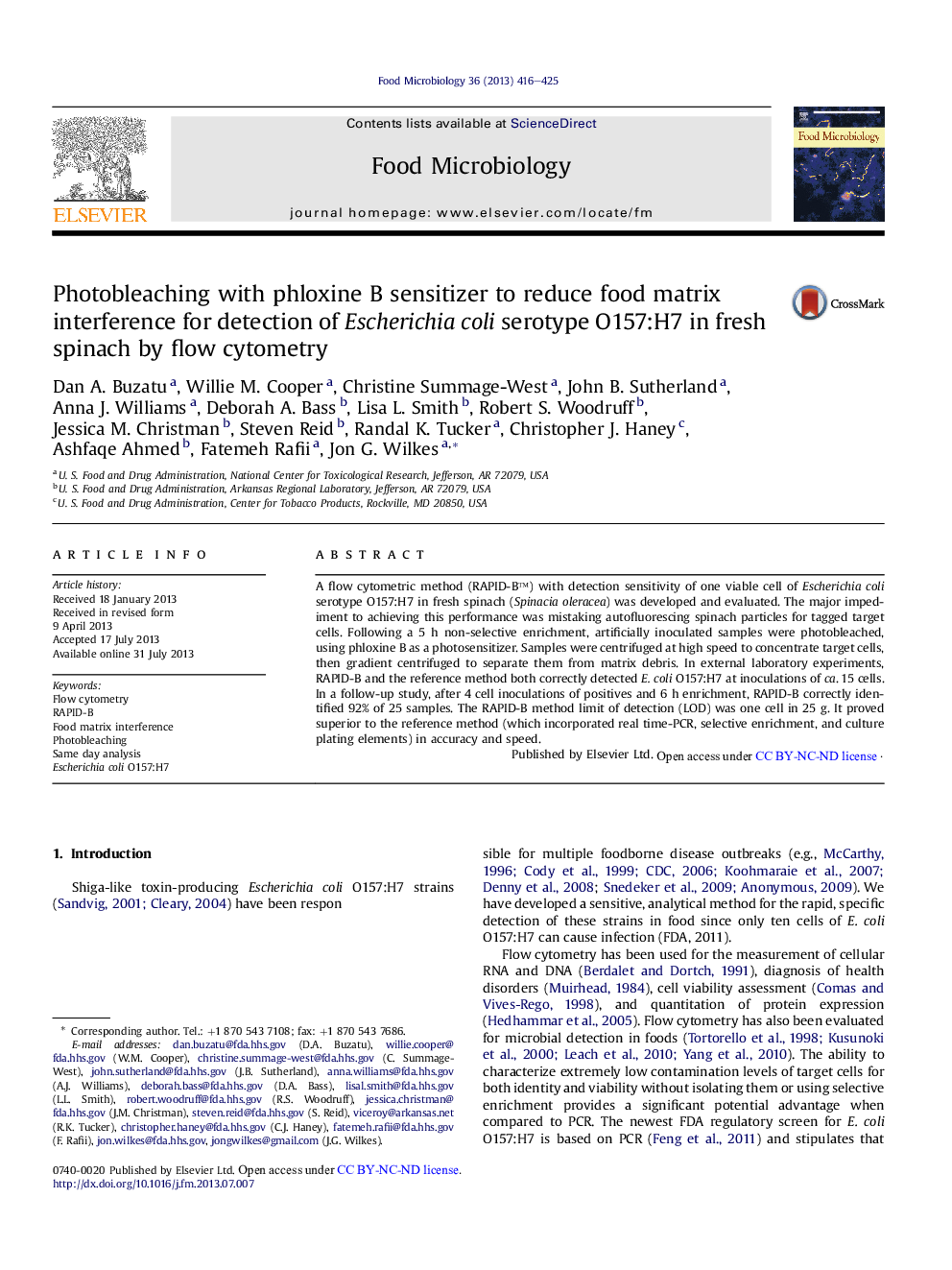| Article ID | Journal | Published Year | Pages | File Type |
|---|---|---|---|---|
| 6288800 | Food Microbiology | 2013 | 10 Pages |
â¢Matrix autofluorescence was reduced via photobleaching.â¢Matrix particles were separated from bacteria by gradient centrifugation.â¢Detection limit in 25 g raw spinach, after 6 h enrichment, was 1 cell of Escherichia coli O157:H7.â¢Rapid method was 92% correct for ca. 4 target cells spiked into 25 g fresh spinach.â¢Rapid method reported no false negatives; two false positives.
A flow cytometric method (RAPID-Bâ¢) with detection sensitivity of one viable cell of Escherichia coli serotype O157:H7 in fresh spinach (Spinacia oleracea) was developed and evaluated. The major impediment to achieving this performance was mistaking autofluorescing spinach particles for tagged target cells. Following a 5 h non-selective enrichment, artificially inoculated samples were photobleached, using phloxine B as a photosensitizer. Samples were centrifuged at high speed to concentrate target cells, then gradient centrifuged to separate them from matrix debris. In external laboratory experiments, RAPID-B and the reference method both correctly detected E. coli O157:H7 at inoculations of ca. 15 cells. In a follow-up study, after 4 cell inoculations of positives and 6 h enrichment, RAPID-B correctly identified 92% of 25 samples. The RAPID-B method limit of detection (LOD) was one cell in 25 g. It proved superior to the reference method (which incorporated real time-PCR, selective enrichment, and culture plating elements) in accuracy and speed.
